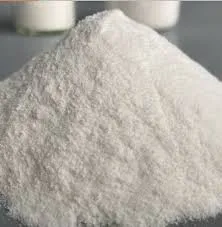
Nov . 20, 2024 11:02 Back to list
hpmc excipient
The Role of HPMC as an Excipient in Pharmaceutical Formulations
Hydroxypropyl Methylcellulose (HPMC) is a versatile excipient widely utilized in the pharmaceutical industry for various applications. As a semi-synthetic polymer derived from cellulose, HPMC possesses unique physicochemical properties that make it an ideal component in drug formulations, including tablets, capsules, and controlled-release systems. This article explores the characteristics, benefits, and applications of HPMC as an excipient.
Characteristics of HPMC
HPMC is known for its solubility in water, forming a clear and viscous solution. It is non-ionic and stable, which means it does not interact unfavorably with active pharmaceutical ingredients (APIs) or other excipients. The polymer varies in viscosity, degree of substitution, and molecular weight, allowing formulators to tailor its properties for specific applications. The versatility of HPMC stems from its ability to function as a binder, thickener, film-former, and controlled-release agent.
Benefits of Using HPMC
1. Binding Properties HPMC is an excellent binding agent in tablet formulations, ensuring that the ingredients hold together during compression. This leads to increased tablet integrity and reduces the risk of breakage during handling.
2. Controlled Release One of the most significant advantages of HPMC is its potential for controlled-release applications. By modifying the viscosity and concentration of HPMC, formulators can create dosage forms that release the active ingredient at a predetermined rate. This characteristic is particularly beneficial for chronic disease management, where prolonged therapeutic effects are required.
3. Stability HPMC is chemically stable and resistant to degradation under various environmental conditions, making it an ideal choice for enhancing the shelf life of pharmaceutical products.
hpmc excipient

4. Compatibility Being non-ionic, HPMC exhibits excellent compatibility with a wide range of APIs and other excipients. This allows for the development of complex formulations without the risk of adverse interactions that could affect the efficacy of the drug.
5. Patient Acceptance The use of HPMC in capsule formulations is often preferred due to its plant-based origin, which aligns with the growing demand for vegetarian and vegan options in the pharmaceutical sector.
Applications in Pharmaceutical Formulations
HPMC is extensively used in various forms of drug delivery systems. In oral solid dosage forms such as tablets and pellets, it serves as a crucial component for binding and controlling release. In the realm of topical formulations, HPMC acts as a thickening agent, enhancing the texture and application of creams and gels.
Furthermore, HPMC is increasingly finding its place in the formulation of ophthalmic preparations due to its ability to retain moisture and provide lubrication in eye drops. Its hydrophilic nature also contributes to the formulation of hydrophilic matrices used in sustained-release systems.
Conclusion
In summary, Hydroxypropyl Methylcellulose is an essential excipient in the pharmaceutical industry, offering a range of beneficial properties that facilitate the development of effective drug formulations. Its multifunctionality as a binder, thickener, and controlled-release agent, coupled with its stability and compatibility, make HPMC a valuable ingredient for both manufacturers and patients alike. As pharmaceutical innovation continues to evolve, the role of HPMC will undoubtedly expand, contributing to the advancement of drug delivery systems and improving therapeutic outcomes.
-
Versatile Hpmc Uses in Different Industries
NewsJun.19,2025
-
Redispersible Powder's Role in Enhancing Durability of Construction Products
NewsJun.19,2025
-
Hydroxyethyl Cellulose Applications Driving Green Industrial Processes
NewsJun.19,2025
-
Exploring Different Redispersible Polymer Powder
NewsJun.19,2025
-
Choosing the Right Mortar Bonding Agent
NewsJun.19,2025
-
Applications and Significance of China Hpmc in Modern Industries
NewsJun.19,2025







